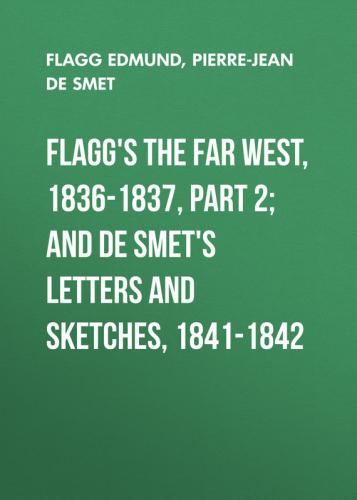to the mountains. In 1842, the company having encountered strong opposition, the federal government was prevailed upon to revive the office of Indian agent. Drips served four years as agent to the Sioux of the upper Missouri, with an annual salary of $1500. In this capacity, Drips rendered valuable service to the company. Upon the expiration of his term of office, he re-entered the company's employment, in which he continued until his death at Kansas City, Missouri (1860). He married a woman of the Oto Indian nation. Their daughter, Mrs. William Mulkey of Kansas City, has in her possession many of her father's valuable papers. See H. M. Chittenden,
American Fur-Trade of the Far West (New York, 1902). – Ed.
83
For a sketch of the Cheyenne, see Bradbury's Travels, in our volume v, p. 140, note 88. – Ed.
84
The rendezvous in 1840 was held in the upper valley of Green River, near Fort Bonneville, in western Wyoming. Near the headwaters of the Missouri, Columbia, and Colorado rivers, this place was a natural and well-known meeting point. For a description of Green River, see Wyeth's Oregon, in our volume xxi, p. 60, note 38; for the rendezvous at this place in 1834, see Townsend's Narrative, in the same volume, p. 192, note 40. – Ed.
85
For a sketch of the Snake Indians, see Bradbury's Travels, in our volume v, p. 227, note 123. – Ed.
86
In the Voyages aux Montagnes Rocheuses, De Smet says, "on the 4th of July, I resumed my travels, with my Flatheads." – Ed.
87
Flathead was a term applied to various tribes of Indians who were supposed to practice the custom of flattening the heads of their infants. A division of the Choctaw was known by this name. The tribe here referred to belonged to the Salishan stock; see Franchère's Narrative, in our volume vi, p. 340, note 145. They were not in the habit of flattening the head, and the origin of their cognomen is unknown. The specific tribe visited by De Smet dwelt along the lake and river which bear their name, with their chief centre in the Bitterroot Valley. By the treaty of 1855 they ceded to the government an extensive tract of land in this region, being nearly two degrees in width and extending from near the forty-second parallel to the British line. In November, 1871, the president issued an order for their removal from Bitterroot Valley to the Jocko reservation. Arrangements were further completed by the article of agreement of August 27, 1872. After considerable delay they removed thither, and together with the Pend d'Oreille and Kutenai, kindred tribes, still inhabit the reservation. See Peter Ronan, Historical Sketch of the Flathead Indian Nation (Helena, 1890).
The Pend d'Oreille (Ear-ring) Indians, whose native name was Kalispel, were kindred to the Flathead, speaking a similar dialect. Their habitat lay northwest of the Flathead proper, upon the Idaho lake and its tributary river bearing their name. – Ed.
88
The Bishop. – De Smet.
89
Evidently a misprint for 27th of August. Consult the succeeding letter. – Ed.
